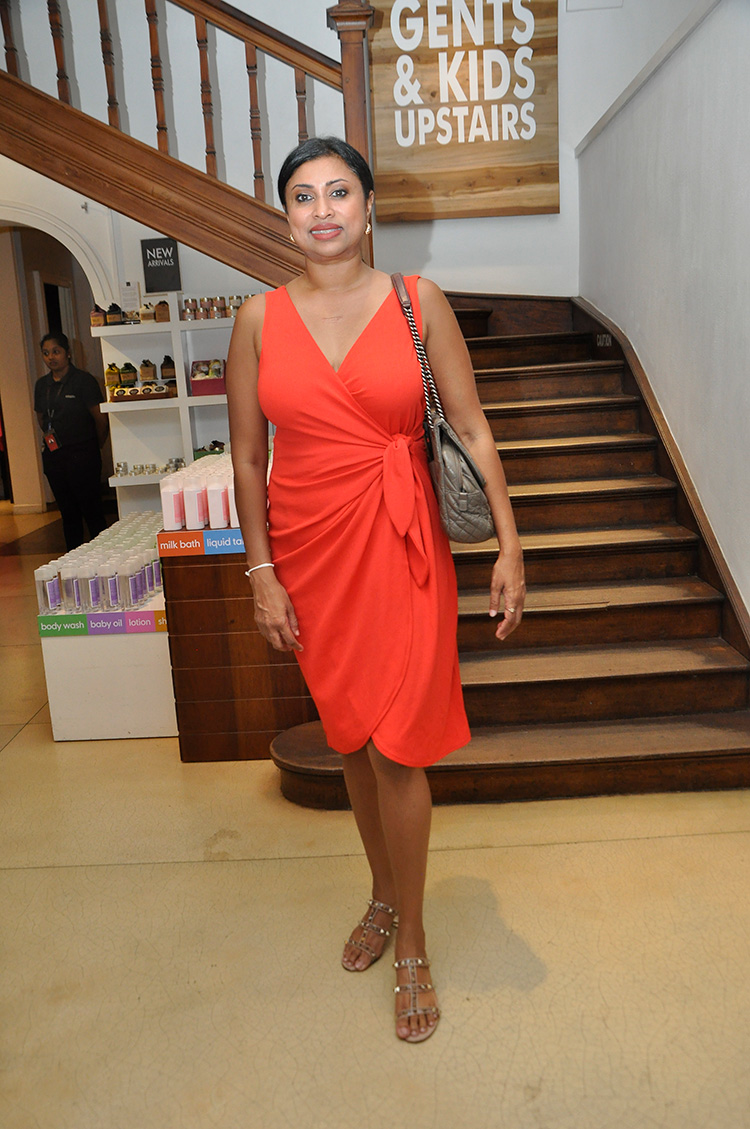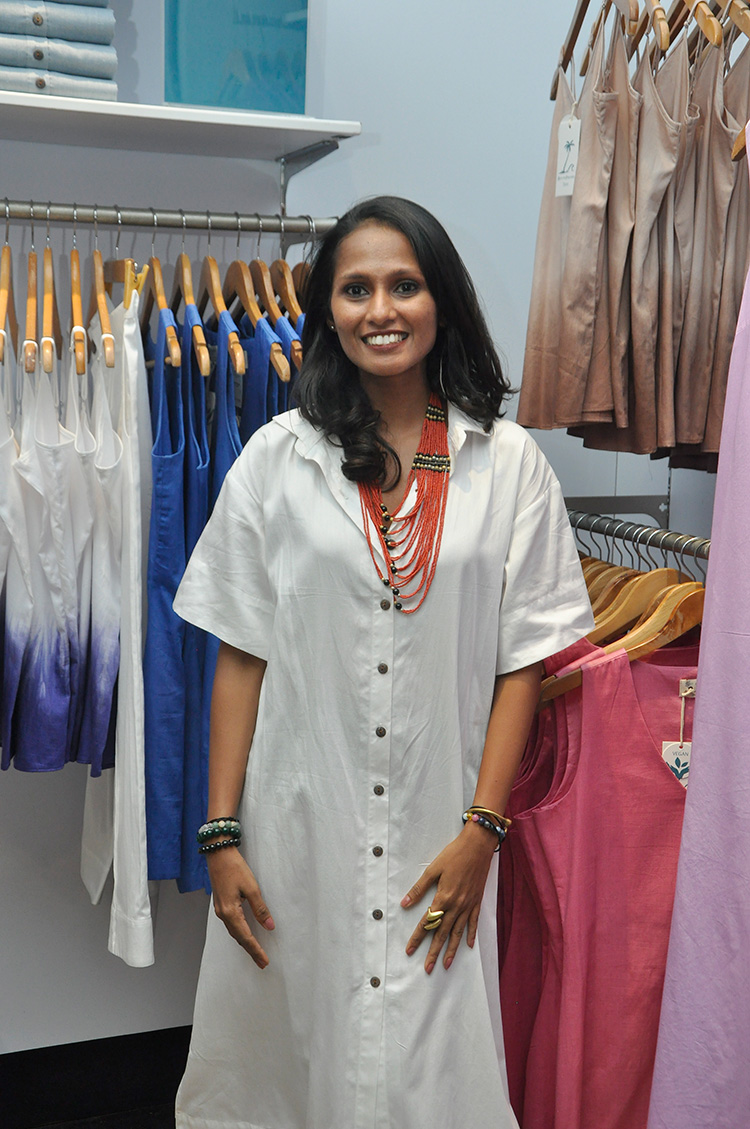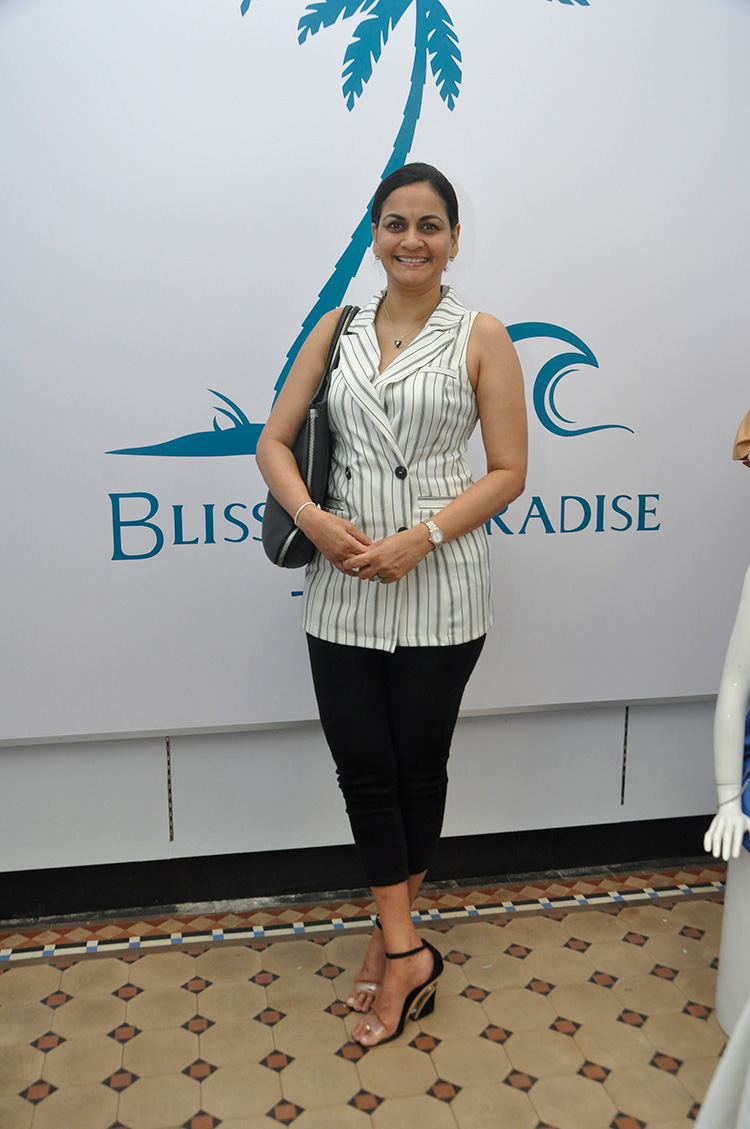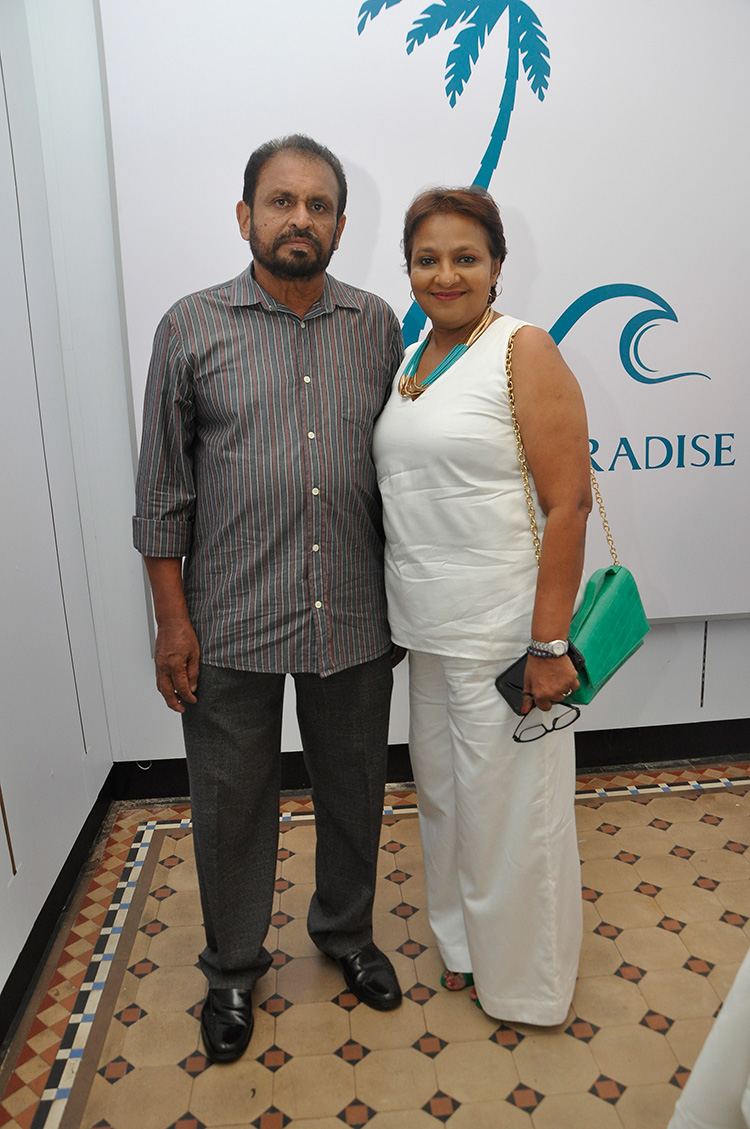Fashion
Swedish fashion brand Frank Dandy on its move from China to Sri Lanka

Since 2017, Daniel Hörnqvist has been the CEO of the Swedish fashion brand Frank Dandy. When he took over, he brought with him extensive experience from e-commerce and the outdoor market. This included responsibility for the launch of the e-commerce brand Bikester in the Nordic region in 2013. In 2015 he took on a position as board member at Frank Dandy before moving on to an executive role. One of the most important decisions in recent years for Frank Dandy has been to move manufacturing to Sri Lanka.
Here, Hornqvist answers three questions about his company moving production from China to Sri Lanka.
What is Frank Dandy’s market position?
We address a clearly defined target group between 20 and 30 years of age outside the metropolitan areas. The target group has a desire to achieve high personal goals and we provide secret superpowers to enable that. This promise permeates all our communication, not at least the visual. We are mainly present in the Nordic region and work with the same brand position in all geographical markets. A solid sustainability practice is also extremely important to us, especially from an employer brand perspective. Frank Dandy is affiliated with the initiative Better cotton and we only use recycled polyester in our swimwear. I would also like to mention our ownership program for our employees.
Why did you move manufacturing to Sri Lanka?
The decision to move manufacturing from China was made with the experience of the pandemic and in light of Russia’s war of aggression against Ukraine. We needed to increase our geopolitical preparedness. I had met lot of positive mentioning about manufacturing in Sri Lanka and as well had my own personal experience from a surf trip a few years earlier.
Since the move to Sri Lanka, our experience has been consistently positive. The Sri Lankan manufacturing industry is technically advanced, and we can follow the manufacturing of our products in real time from Sweden. The Sri Lankan manufacturing industry’s sustainability ambitions are high, both in terms of renewable electricity use and in the development of sustainable wastewater systems from production. The country is buzzing with growth and the high level of education is evident in everything.
What has the membership of the Sweden-Sri Lanka Business Council meant?
The membership was an incredible door opener when we were in the process of evaluating whether to move manufacturing to Sri Lanka. It helped us build relationships that I don’t think would have been possible otherwise. To spread our risks, we moved our manufacturing gradually and without the support of the SSLBC it would have been much more complicated.
What is Frank Dandy’s market position?
We address a clearly defined target group between 20 and 30 years of age outside the metropolitan areas. The target group has a desire to achieve high personal goals and we provide secret superpowers to enable that. This promise permeates all our communication, not at least the visual. We are mainly present in the Nordic region and work with the same brand position in all geographical markets. A solid sustainability practice is also extremely important to us, especially from an employer brand perspective. Frank Dandy is affiliated with the initiative Better cotton and we only use recycled polyester in our swimwear. I would also like to mention our ownership program for our employees.
Why did you move manufacturing to Sri Lanka?
The decision to move manufacturing from China was made with the experience of the pandemic and in light of Russia’s war of aggression against Ukraine. We needed to increase our geopolitical preparedness. I had met lot of positive mentioning about manufacturing in Sri Lanka and as well had my own personal experience from a surf trip a few years earlier. Since the move to Sri Lanka, our experience has been consistently positive. The Sri Lankan manufacturing industry is technically advanced, and we can follow the manufacturing of our products in real time from Sweden. The Sri Lankan manufacturing industry’s sustainability ambitions are high, both in terms of renewable electricity use and in the development of sustainable wastewater systems from production. The country is buzzing with growth and the high level of education is evident in everything.
What has the membership of the Sweden-Sri Lanka Business Council meant?
The membership was an incredible door opener when we were in the process of evaluating whether to move manufacturing to Sri Lanka. It helped us build relationships that I don’t think would have been possible otherwise. To spread our risks, we moved our manufacturing gradually and without the support of the SSLBC it would have been much more complicated.
Fashion
French model Ines in Sri Lankan spotlight

By Zanita careem
Modelling is sometimes an undiscovered and unknown way, it might be something that you have dreamed about and to your surprise you are destined to that route.This statement holds so true for Ines, a model from France, she is a model and she knows how to nail it. Ines believes in uniqueness and the moment the camera turns on she is there to give that unique and perfect shot. Her styling secret is to go elegant yet comfortable.Ines loves to work hard to be the perfect one out there and this could be something that could really motivate and inspire other people.
Q: Tell us a little about you and what was life growing up?
A: I’m Ines, born and raised in Paris with a family rich in values, primarily emphasizing independence and an entrepreneurial spirit.
I’ve had a passion for traveling ever since my mother took my brother and me on a year-long world tour when I was 12. Since then, I’ve pursued my studies in hospitality management online, and my journey led me to Sri Lanka, where I’ve been living for five years now.
Meeting people has helped me practice languages, and after traveling to more than 20 countries, I speak 4 languages including Sinhala. I live in the southern part of Sri Lanka where nature, tranquility, and the sound of the ocean reign.
Q: How were you discovered and how has your journey being so far?
A: As a hospitality student during the COVID lockdown, I was approached by clothing brands to work as a model. Prior to moving to Sri Lanka, I had done photo shoots for friends’ brands and especially for my mother’s jewellery line, but I never imagined having a professional career in this field.
I embrace challenges and seize new opportunities, hence I embarked on a career in modelling, which grew to such an extent that I established my own company as a freelance model. Additionally, as a dancer and artistic director, I also work on creative concepts that go beyond the typical photo shoots in Sri Lanka.
Q: Have you always had a passion for fashion and modelling?
A: I discovered this passion when I began posing in front of a camera. As a child, I always enjoyed shopping and dressing up, but I never imagined it would become my profession, especially since I struggled with my weight when I was younger. I believe that nothing in life happens by chance, and if I have fallen in love with Sri Lanka, it is for a reason. This country is full of opportunities; one simply needs to work hard and stand out from the rest.
Q: Biggest hurdle what are some obstacles you faced?
A: I do not encounter specific obstacles in my professional career, but my weakness lies in my sociability. I need to continue working and managing my energy and preserving it for projects that truly bring me happiness. Given the high level of tourism in the southern part of the country, interactions are plenty but can be challenging.
Q: Some latest and up coming projects?
A: The latest project I am currently working on is establishing a career in content creation. I aspire to express and unleash my creativity while collaborating with brands and hotels that hold significance to me. A future project that I have dreamt of for a long time is launching my own clothing brand… but everything takes its own time…
Q: Top tips that keep you looking youthful?
A: Appearing young is of no importance to me; what truly matters is feeling comfortable in one’s own skin and being happy. Youthfulness is largely defined by attitude and energy. What brings me happiness is my family, projects, travels, dancing, and surfing.
Q: What are some of the pros of being a model?
A: The benefits of being a model include constantly being on the move and sometimes even travelling. Additionally, I am deeply grateful for the attention and care that teams provide; it makes me feel like a princess. Representing a brand or company also fosters self-confidence and gratitude.
8. Q: If you could change anything about the fashion industry, what would it be?
A: If I were to change something in the fashion industry in Sri Lanka, it would be to encourage brands to be more creative and accept models of diverse body shapes. Moreover, it’s crucial for them to recognize the beauty of the majority of the population’s natural, dusky skin tones. It’s time to dispel stereotypes associated with fair skin. Sri Lankan dusky skin is beautiful, and it’s imperative to stop labelling it as inferior to fair skin.
Q: What is your mantra?
A: My life philosphy is one of positivity towards everything I do and everything that happens to me. There is always a lesson to be learned
Q: Some of your favourite designers?
A: My favourite designer is Kami Hewavitharane and a brand labelled the Colombo Batik brand.. This brand produces unique and colorful designs and thier collections are breathtakingly beautiful.
Q: If you weren’t a model what would you be?
A: In addition to my career as a model, I work as a manager in hospitality and restaurant management. It’s one of my passions. Otherwise, I would have liked to pursue a career as a professional dancer, but it requires years of practice.
Q: So, has your perception of the fashion industry changed over time?
A: My perception of the industry has not changed much, but I feel now the industry has moved forward for the better. There is originality and creativity amongst most of the designers, and I see an increasing number of women venturing into it, which pleases me.
Q: What was the most important moment in your life?
A: What a difficult question haha! So many beautiful moments, and even the tough ones, have contributed significantly to my growth and evolution. However, the most crucial moment was staying in Sri Lanka despite the COVID conditions and France’s requirement for expatriates to return. I stayed back and took up challenges to pursue my own brand.
Q: What do you think about the state of fashion today?
A: I believe that the state of the fashion industry in Sri Lanka is undergoing significant evolution, with Sri Lankans becoming increasingly independent, liberated, and enterprising.
Fashion
Black dress-versatatile and timeless
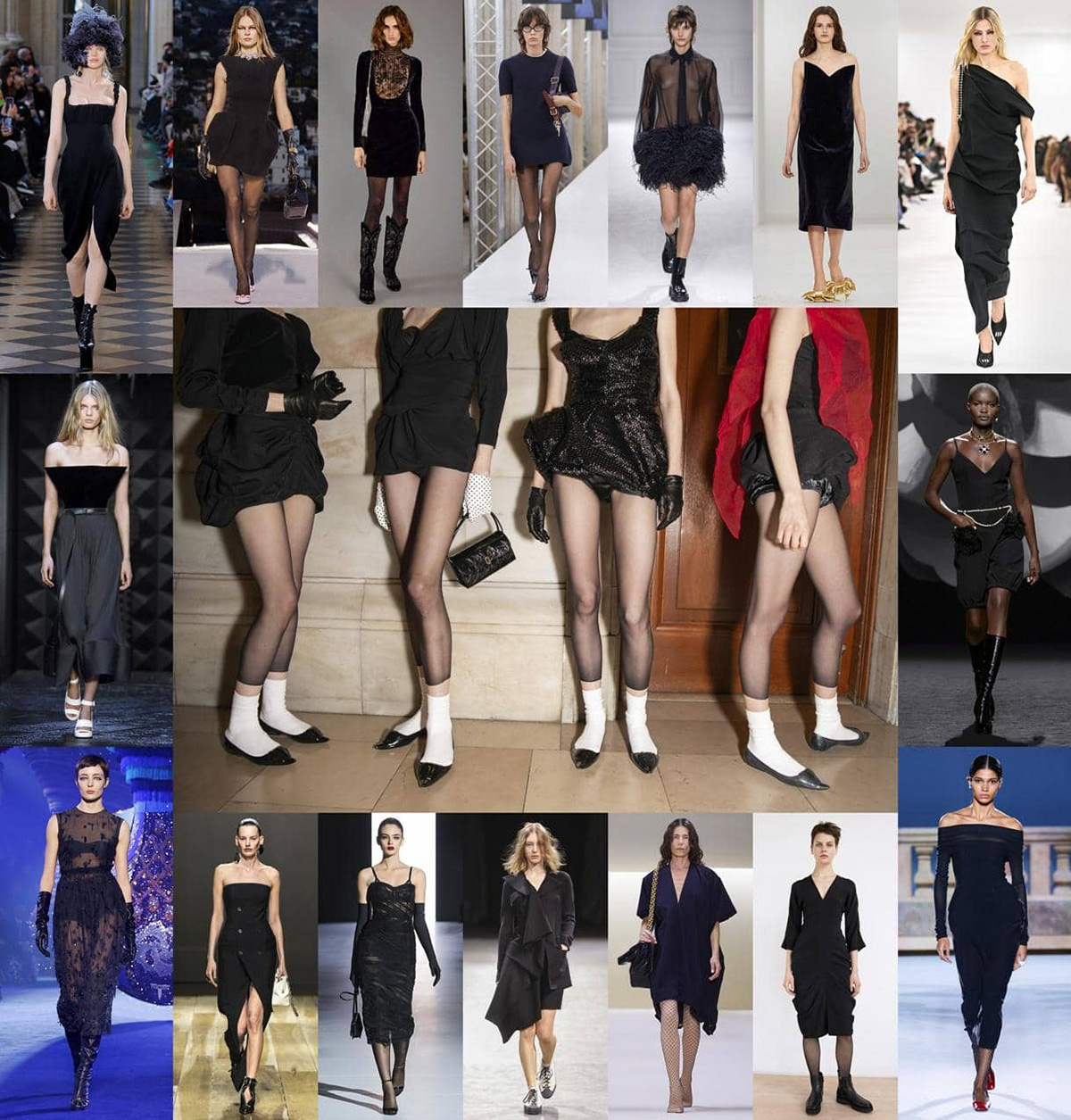
 The little black dress plays such a starring role in our wardrobes that it has its own special designation: the LBD. Vogue’s Hamish Bowles takes us through its history, decade by decade, from Coco Chanel to Cushnie on black dress.
The little black dress plays such a starring role in our wardrobes that it has its own special designation: the LBD. Vogue’s Hamish Bowles takes us through its history, decade by decade, from Coco Chanel to Cushnie on black dress.
It’s Mademoiselle Chanel who is credited with popularizing the look and, in doing so, making the colour black, previously worn only when in mourning or to express piety (as in ecclesiastical garb), fashionable. In 1926 Vogue dubbed a drawing of one of her snappy, drop-waisted LBDs, “The Chanel ‘Ford’—the frock that all the world will wear.”
They did, and do—men have recently gotten in on the game—though not all carry the Chanel label. In the 1950s, Christian Dior defined the look of the LBD: full-skirted and wasp-waisted. The little black dress Hubert de Givenchy designed for Audrey Hepburn in the movie Breakfast at Tiffany’s is as representative of the early 1960s as Yves Saint Laurent’s sheer, feather-trimmed number of the latter part of that iconoclastic decade.
Cocktail dresses and LBDs, which are defined by their short(ish) length, are often one and the same. One of the reasons neither will ever go out of style is that there are myriad ways to play “mixologist” with the spare, neat LBD to give it just the kick you want. Cheers!
The little black dress plays such a starring role in our wardrobes that it has its own special designation: the LBD.
In 1926 Vogue dubbed a drawing of one of her snappy, drop-waisted LBDs, “The Chanel ‘Ford’—the frock that all the world will wear.”
From the moment Coco Chanel presented it to the world in the 1920s, the eternal dress became a canvas that almost every designer wanted to weave something of their own into. Although it has moved away from its basic principles, the little black dress has retained the same charm and the same note of seductiveness it once had, and new variations, as with every season so far, also graced the runways in the fall/winter 2024 collections.
Ultra-short models shone on the runways from Tom Ford, Schiaparelli, Givenchy, Giambattista Valli to Ferragamo, as well as many others, proving once again that the little black dress is a garment that will function in every collection and that will, ultimately, also surely be worn. Although the models of these fashion names differ and each has brought their own vision to the iconic dress, what they have in common is that they all serve as a good reminder that the charm of the little black dress does not fade and that we will always return to it, precisely because it is so timeless and versatile.
From the moment Coco Chanel presented it to the world in the 1920s, the eternal dress became a canvas that almost every designer wanted to weave something of their own into. Although it has moved away from its basic principles, the little black dress has retained the same charm and the same note of seductiveness it once had, and new variations, as with every season so far, also graced the runways in the fall/winter 2024 collections.
Ultra-short models shone on the runways from Tom Ford, Schiaparelli, Givenchy, Giambattista Valli to Ferragamo, as well as many others, proving once again that the little black dress is a garment that will function in every collection and that will, ultimately, also surely be worn.
Although the models of these fashion names differ and each has brought their own vision to the iconic dress, what they have in common is that they all serve as a good reminder that the charm of the little black dress does not fade and that we will always return to it, precisely because it is so timeless and versatile.
Fashion
Groundbreaking new collection from Vegan fabric

At a very young age Thushani Rodrigo discovered her love for fashion. An entrepreneur and a fashion designer, she loves to create clothes and garments for people to wear with pride.
 Sri Lanka’s fashion landscape is about to experience a transformative shift as Thushani Rodrigo, the visionary founder of Todos, introduces Bliss in Paradise her latest collection with the inspiring ethos, “Wrap Yourself in Kindness.” Under the theme “Fashioning Tomorrow,” Thushani’s collection invites individuals to embrace Vegan Silk as a symbol of kindness towards animals and the environment.
Sri Lanka’s fashion landscape is about to experience a transformative shift as Thushani Rodrigo, the visionary founder of Todos, introduces Bliss in Paradise her latest collection with the inspiring ethos, “Wrap Yourself in Kindness.” Under the theme “Fashioning Tomorrow,” Thushani’s collection invites individuals to embrace Vegan Silk as a symbol of kindness towards animals and the environment.
The ethos “Wrap Yourself in Kindness” embodies the essence of Thushani’s collection, emphasizing the importance of compassion and sustainability in fashion. Through the use of Vegan Silk, derived from eco-friendly plant sources, Thushani encourages individuals to adopt a lifestyle of kindness towards animals and the planet.
Despite facing a hearing impairment, Thushani Rodrigo’s passion and determination have propelled her to remarkable heights in the world of fashion. At the age of 16, she earned her Diploma in-Dress Making from Singer School, laying the foundation for her entrepreneurial journey.
Today, Thushani stands as a beacon of innovation and sustainability in the fashion landscape. Her latest venture, which will be retailed at Cotton Collection underscores he- unwavering commitment to ethical fashion practices and environmental responsibility.
Vegan silk, also known as “plant-based silk” or “cruelty-free silk,” serves as the cornerstone of Thushani’s groundbreaking collection. Derived from sustainable plant sources, Vegan Fabric offers a sustainable and animal-friendly alternative to traditional silk.
Thushani’s designs, meticulously crafted from Vegan Fabric, embrace the female form while seamlessly blending sensuousness with practicality.
The launch of Thushani Rodrigo’s Vegan Fabric Collection with Cotton Collection heralds a new era of sustainable fashion in Sri Lanka. By embracing cruelty-free materials and ethical production practices, Thushani paves the way for a more conscious and compassionate fashion industry.
Join us in celebrating this monumental milestone in sustainable fashion as Thushani Rodrigo and Cotton Collection redefine the future of style with their innovative Vegan Fabric Collection.
For media inquiries, please contact: Ruwanthi Rodrigo 0777660477
- Talented Tushani Rodrigo
Pix by Thushara Attapathu


